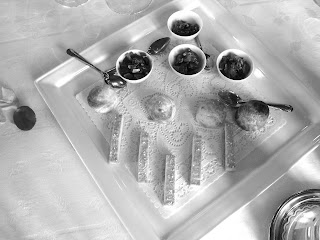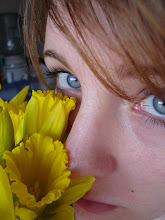Having recently returned from a culinary trip to France, I have much advice, many stories, and must-see places in store for you.
Being the only vegetarian on this trip proved to be, despite challenging and humiliating at times, a far greater an experience than I could have asked for. No matter where we went to, the ego of the French chefs inspired them to always serve me and amazing meal, despite the trouble of being the only different dish of the group.
The plane landed in Lyon the morning of May 26. Jetlagged, jittery and ready for a nap, the lot of us (nine students and two teachers) stepped outside to this foreign country with the sunlight staring us right in the eye. Fresh air… we all sucked in deep breaths while walking back and forth aimlessly to reconnect with our legs. Then we saw him, our tour guide for the trip, Chef Michelle.
Now, when I was in Italy, we always knew where we were, what we were eating, why the food was relevant to the region we were in, and each had our personal copy of the itinerary. In France, we had no idea where we were, where we were going, only one person had a copy of the itinerary, and we were never told what we were eating until after it was consumed (I, on the other had, was allowed to ask).
Also, when we arrived in Italy, Chef Paulo gave us the entire day to rest before dinner that night with a cheese and wine tasting. In France, you suck it up. We arrived at the hotel, unloaded our luggage into our rooms and were given an hour or two before a tour around the city of Lyon followed by another short break before dinner.
In the kitchen, the French play with class. Every meal I had was a perfect combination of classical, modern, and experimental foods. From oeufs en meurette (eggs in red wine sauce) to mashed potatoes frothed in whipping cream canisters, every meal had my full attention and anticipation, while a couple ended with my utmost appreciation.
In as quick an overview I am able to give, I will try to recap my experiences in France. Demonstrations were given personally to us by world renowned chefs at the Institute Paul Bocuse, with breaks for meals and a grandeur finale consisting of a seven course tour of heaven all taking place in your mouth (some pictures below from the dinner).
Markets in the mornings, chocolate confectioners in the afternoon, medieval villages in the late afternoon for more food (artichokes and creamed spinach and mushroom dish, oh my!).
Cheeses, oils, vinegars, and wines. Historical tours through the process of wine making and fun tests for the senses along the way.
If I had to recommend one place in France to eat, I would encourage strongly for someone to eat at Loiseau des Vignes. The chefs managed to grab my attention while earning my respect; they served me one of the best meals in my entire life.
Walking through caves, then classes for lunch; salt mines in the afternoon, and a wonderful horse-ride before supper and bed, the days proved to be full and exhausting. The beds always seemed to gently whisper for me to sleep; I needed to reboot my energy for more wine, food and… absinthe?
After another wonderful breakfast with fresh, unsweetened yogurt accompanied by fresh fruit with golden raisins tossed on top, our group headed to visit Pierre Guy Distillery in Pontarlier, the produces of fine alcohol and absinthe. After a short tour of the distillery and how the alcohol is produced, they offered shots of any alcohol we wanted. Eying my way through the bottles, I knew for sure the three I would have to partake in; peach liqueur, a pine tree liqueur and absinthe. I will go more in depth on these liqueurs another time, but state now that those were the best liqueurs I have ever tasted.
Taking a journey out to the country, we visited a farmer of poulet de bresse. The birds are highly valued for their rich, gamey depth of flavour, yet with fine, tender flesh and delicious, clean-flowing fat. Roughly 1.2 million are raised annually, but such is the demand inside France that few birds make it out of the country. As a premium product, they sell at a premium price: Poulet de Bresse command around 15 euro ($21) per kilo at fine food markets.*
Our last dinner took us up into a small town in the mountains (again, sorry, but I don’t know where I was!) where a copper workshop resides. Before touring the production facility for copper production, we dined at Le Cerdonnet, a colorful restaurant seated in the base of the mountain.
Filled with food, wine and wonderful memories yearning to be recreated in the near future, I arrived at the Lyon airport to make my way home; Iowa.
*http://en.wikipedia.org/wiki/Poulet_de_Bresse





















































